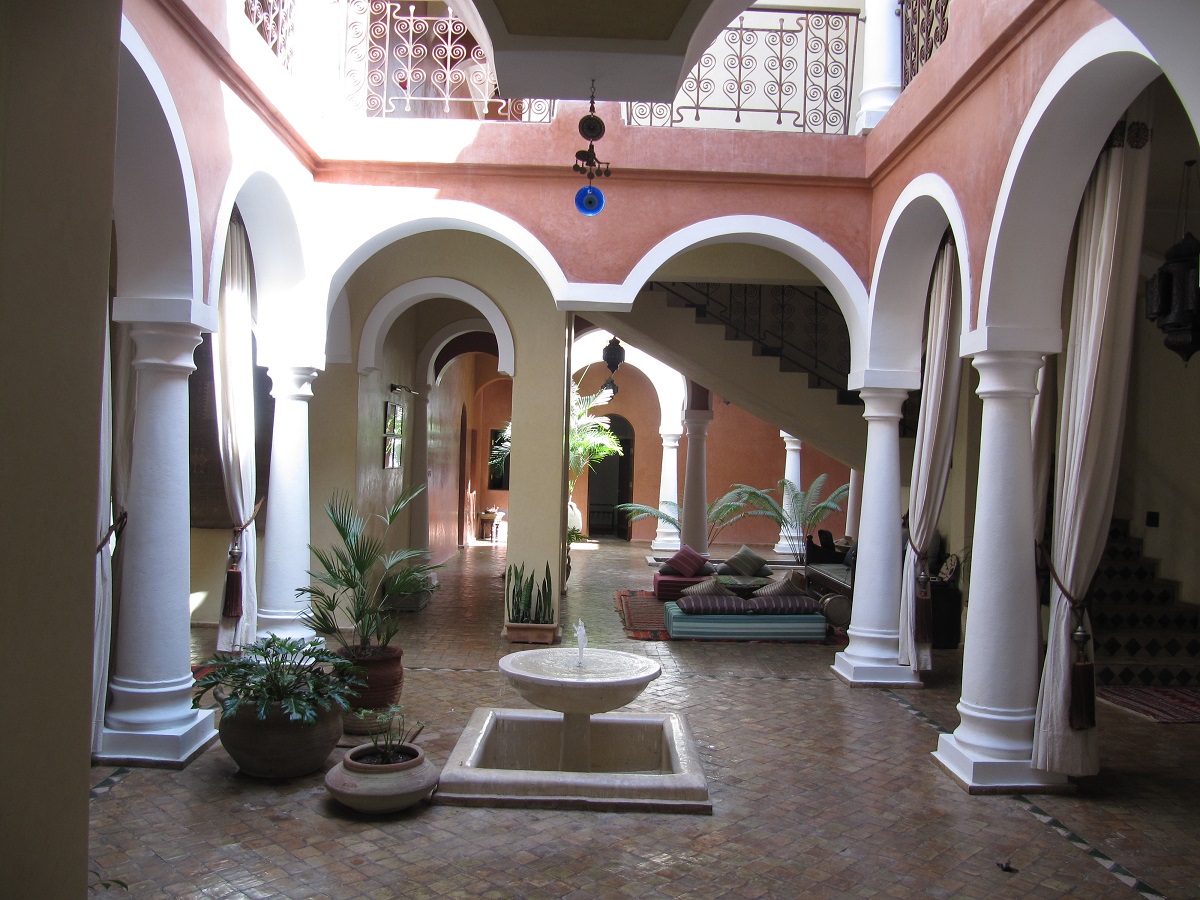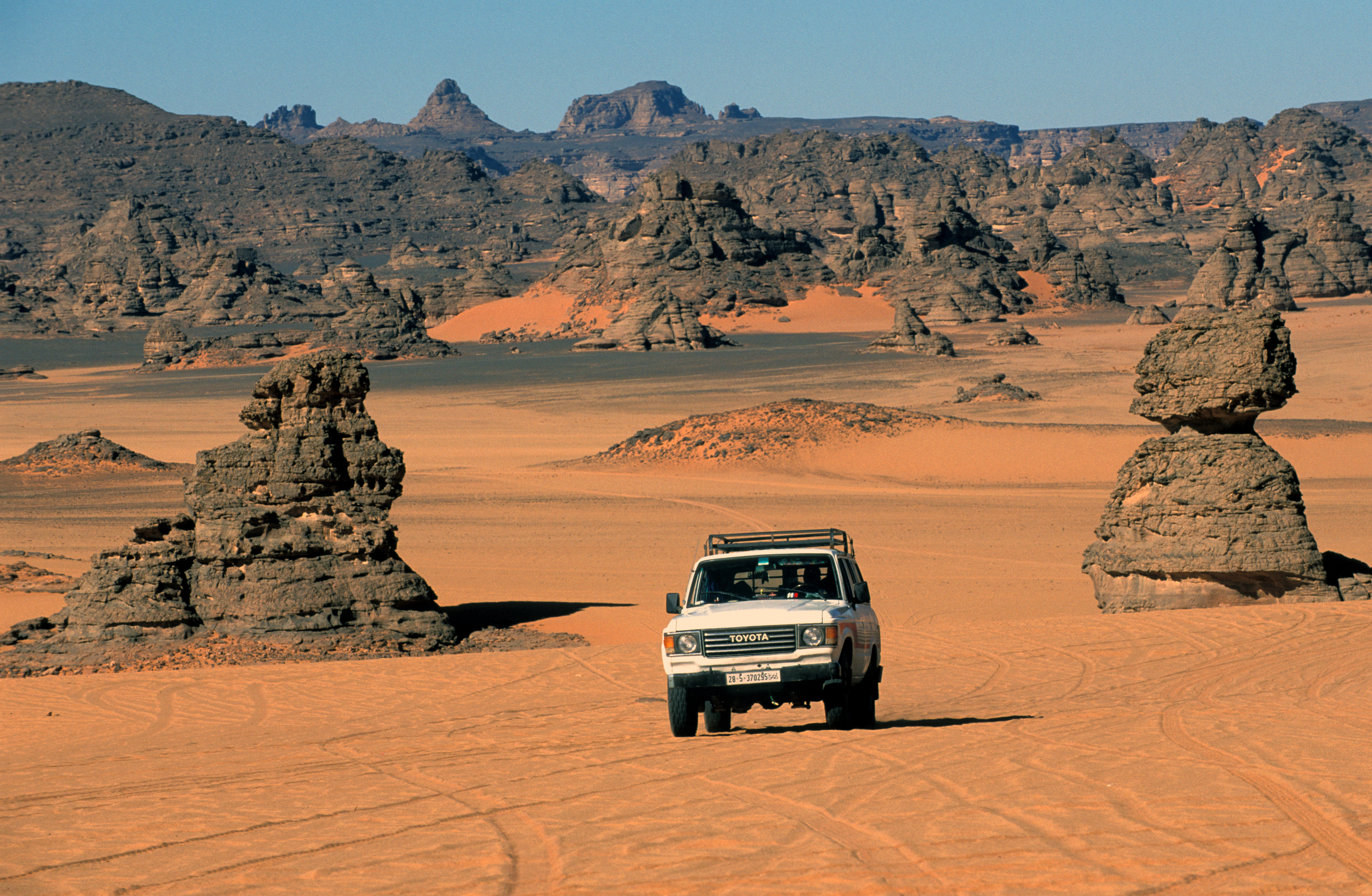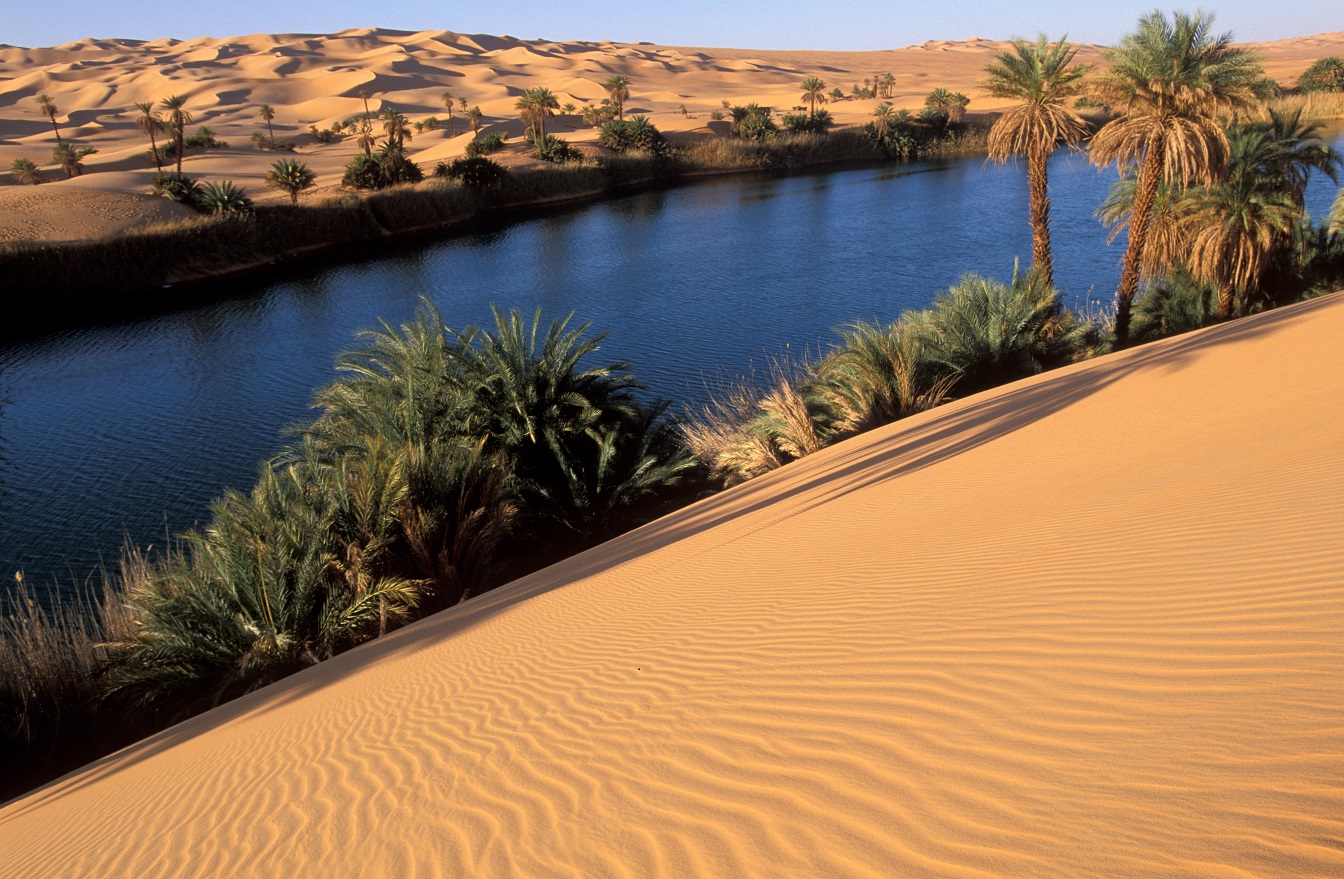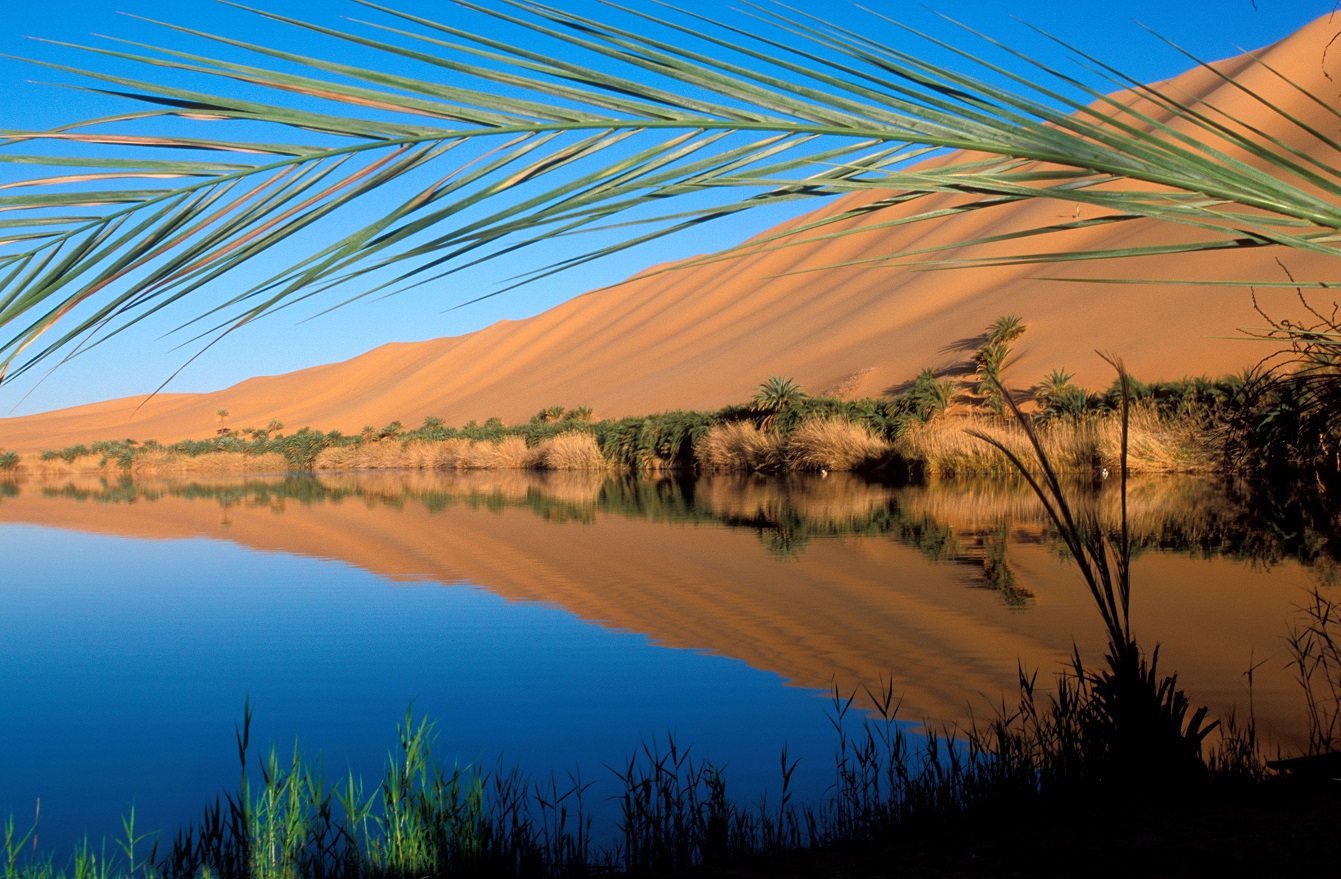Jewels of the Desert
Private tour of the Jewels of the Desert
Day 1 Tripoli
Highlights: Algeria Square and Martyrs Square.
Arrive Tripoli. Transfer to hotel. Short walking tour in modern Tripoli including Algeria Square with its imposing mosque converted from a cathedral, and Martyrs Square, the hub of Tripoli.


Day 2 Tripoli
Highlights: National Museum and Tripoli old city.
A full day sightseeing in Libya’s capital city, known as the ”White Bride of the Mediterranean”. In the morning, we visit the wonderful National Museum which includes one of the finest collections of statuary and mosaics in the world. The walled old town of Tripoli encloses, arguably, the most charming medina in all of North Africa. After lunch in an old town restaurant, we’ll explore the warren of streets and alleyways, including the bustling souks, each devoted to a different trade, the historic house of the 18th century governor Karamanli, the Karamanli Mosque, the 16th century Dragut Mosque, burial place of the famous pirate of that name, the 19th century Gorgi Mosque, the 18th century former British Consulate, the former Turkish Prison, now a school, St. George’s Orthodox Church, the 19th century Ottoman clock tower and the sole surviving building of Roman Oea, the 2nd century Arch of Marcus Aurelius.


Day 3 Qasr Al-Haj – Nalut – Ghadames
Highlights: Centuries, old Berber qasrs of Qasr al-Haj and Nalut.
Today, we leave Tripoli and drive into the Berber heartland of the Jabal Nafusa. Our first stop will be at Qasr al-Haj to visit the most beautiful Berber granary qasr (castle) in Libya, and it’s no wonder that Dan Cruickshank chose this imposing 13th century fortress, circular in build, as one of ”The World’ s 80 Greatest Treasures” in his recent BBC TV series. We continue to Nalut to visit another Berber qasr situated on the edge of an escarpment. This impressive granary castle, with its narrow passageways, is of a different design to that of Qasr al-Haj. We continue to the UNESCO World Heritage Site of Ghadames, known as the ”Jewel of the Sahara”, where we stay for two nights.


Day 4 Ghadames
Highlights: Ghadames Old Town, Lunch in a Traditional House, Sand Dunes of the Grand Erg.
Entering via the ancient gateway of Bab al-Burr, today we explore the labyrinthine streets and enclosed passages of Ghadames’ old town, once inhabited by the tribes of the Bani Wazid and the Bani Walid. Renowned for its distinctive architecture, we visit the various small squares, the old mosque and a madrasa (Koranic school), see the fruit and vegetable gardens and view the ancient system of irrigation. Lunch will be taken in a richly decorated traditional house in the age-old manner, sitting on the floor eating from communal dishes. We climb on to the roof of the house to see where the women, forbidden to wander the streets alone, would use the rooftops as a thoroughfare. We also visit Ghadames museum with its historical and ethnographic displays. Later in the afternoon, we climb aboard four-wheel drive vehicles to visit Ras al-Ghoul (Summit of the Ghost), the remains of an ancient Roman fort before heading for the sand dunes of the Grand Erg Oriental, bordering the countries of Libya, Algeria and Tunisia to watch the sunset. (lunch included)


Day 5 Ghadames – Sebha
A day’s drive through the Hamadat al-Hamra via al-Qariyah and the Libyan truck stop of al-Shwayrif to Sebha, capital of the Fezzan.
Day 6 Sebha – Wadi Matkhandoush – Murzuk Sand Sea
Highlights: Rock art of Wadi Matkhandoush, Camping wild in the Murzuk Sand Sea.
Drive on tarmac from Sebha to Germa where we enter the desert for the drive to Wadi Matkhandoush, an ancient spiritual site festooned with rock engravings dating back thousands of years. Arrive in time for lunch before beginning exploration of the site. Afterwards, we’ll camp on the edge of the mighty Murzuk Sand Sea. Accommodation: Wild camping


Day 7 Mesak Mistafit – Wan Ekamed – Mesak Millat – Wan casa – The Acacus
Highlights: Camping wild in stunning desert scenery adn Rock art of Wan Ekamed.
Continue through the rocky desert terrain of the Masak Mistafit and Mesak Millat, stopping to view the beautiful prehistoric engravings at Wan Ekamed. Continue through the rolling sand dunes of Wan Casa to the edge of the Acacus. Accommodation: Wild camping

Day 8 The Acacus
Highlights: Camping wild in stunning desert scenery and the Millennia-old rock art.
Exploration of the Acacus, with its amazing vistas and superb rock paintings charting the evolution of human societies harking back 12000 years. The scenery, with its great basalt monoliths ladled among shifting sands, is awe-inpiring, particularly the great 150 metre high arch of Afizajarin. Accommodation: Wild camping

Day 9 The Acacus – Al- Awainat
Highlights: Camping wild in stunning desert scenery and Millennia-old rock art.
Continue exploration of the Acacus. Drive via Wadi Adad and ”Finger Rock” and exit to the town of Al-Awainat where we overnight. Accommodation: Wild camping

Day 10 Al-Awainat – Germa – Ubari Sand Sea
Highlights: Ancient capital of the Garamantians, Towering dunes and salt lakes of the Ubari Sand Sea.
From Al-Awainat, we drive north to Germa where we visit the ancient capital of the Garamantian civilisation before heading into the high dunes of the Ubari Sand Sea on an exhilirating ride to the great Ubari lakes of Lake Gabraoun and Lake Umm al-Maa. These beautiful oases are enchanting, and offer the opportunity for a refreshing swim in the salt waters followed by a dousing with freshwater from a well. Accommodation: Wild camping


Day 11 Ubari Sand Sea – Sebha – Tripoli
Highlights: Towering dunes and salt lakes of the Ubari Sand Sea.
Continue visit to Ubari Sand Sea before driving to Sebha for flight to Tripoli.
Day 12 Janzour – Sabratha – Tripoli
Highlights: Roman Theatre of Sabratha and Tomb paintings of Janzour.
We leave Tripoli for the day, heading west along the coastal road to Janzour where we visit the Janzour Museum and go underground to see the catacombs with their tomb paintings. We continue to the UNESCO World Heritage Site of Sabrata, originally founded in the 4th century BC. It later fell under Greek influence before Rome took hold in the 1st century AD. The most spectacular monument is the Theatre, featuring 108 Corinthian columns rising to a height of twenty metres above the stage. Below the stage you will see marble friezes depicting mythological figures including, inter alia, the Three Graces, the Judgement of Paris and the Nine Muses. We also see the Punic Mausoleum of Bes, the Temple of Antoninus, the Temple of Zeus, the Court of Justice and the great Roman Forum.


Day 13 Leptis magna – Villa Sileen
Highlights: Everything at Leptis Magna! Paintings and the mosaics of Villa Sileen.
Full day excursion to Leptis Magna (UNESO World Heritage Site), the largest and best-preserved Roman city in the world that came to prominence in the 2nd century AD under its native son, the Emperor Septimus Severus. Following his reign, the city fell into decline until revived by the Emperor Justinian in the 5th century AD at which time it fell under Byzantine rule. The vast site is truly spectacular and includes the triumphal Arch of Septimus Severus, the Hadrianic Baths complex, the Palaestra (Athletics Ground), the Nymphaeum (Temple of Nymphs), the huge Imperial Forum, the Basilica, the Arches of Tiberius and Trajan, the Theatre with its beautiful backdrop against the Mediterranean Sea, the Sanctuary of the Divine Emperors, and the Market with its unique kiosks which, at the time of construction, were a groundbreaking design in the Roman world. In the eastern part of the city lie the Circus and the vast Amphitheatre, the most complete in the world, with seating for over 15,000 spectators. You will visit the vast arena, the terraces, gladiators’ anterooms and animal enclosures.
En route back to Tripoli, a visit will be made to the 2nd century Villa Sileen discovered in 1974. The wall paintings portray scenes such as gladiatorial combat and chariot racing while the mosaics display river scenes that include sea nymphs, birds and animals.


Day 14 Tripoli
At leisure until transfer to the airport.
-
DepartureTripoli International Airport
-
Included3 star accommodationsTransfersTourist attractions feesTransportPrivate guide ENG speakingWild camping
-
Not IncludedInsuranceFoodDrinks